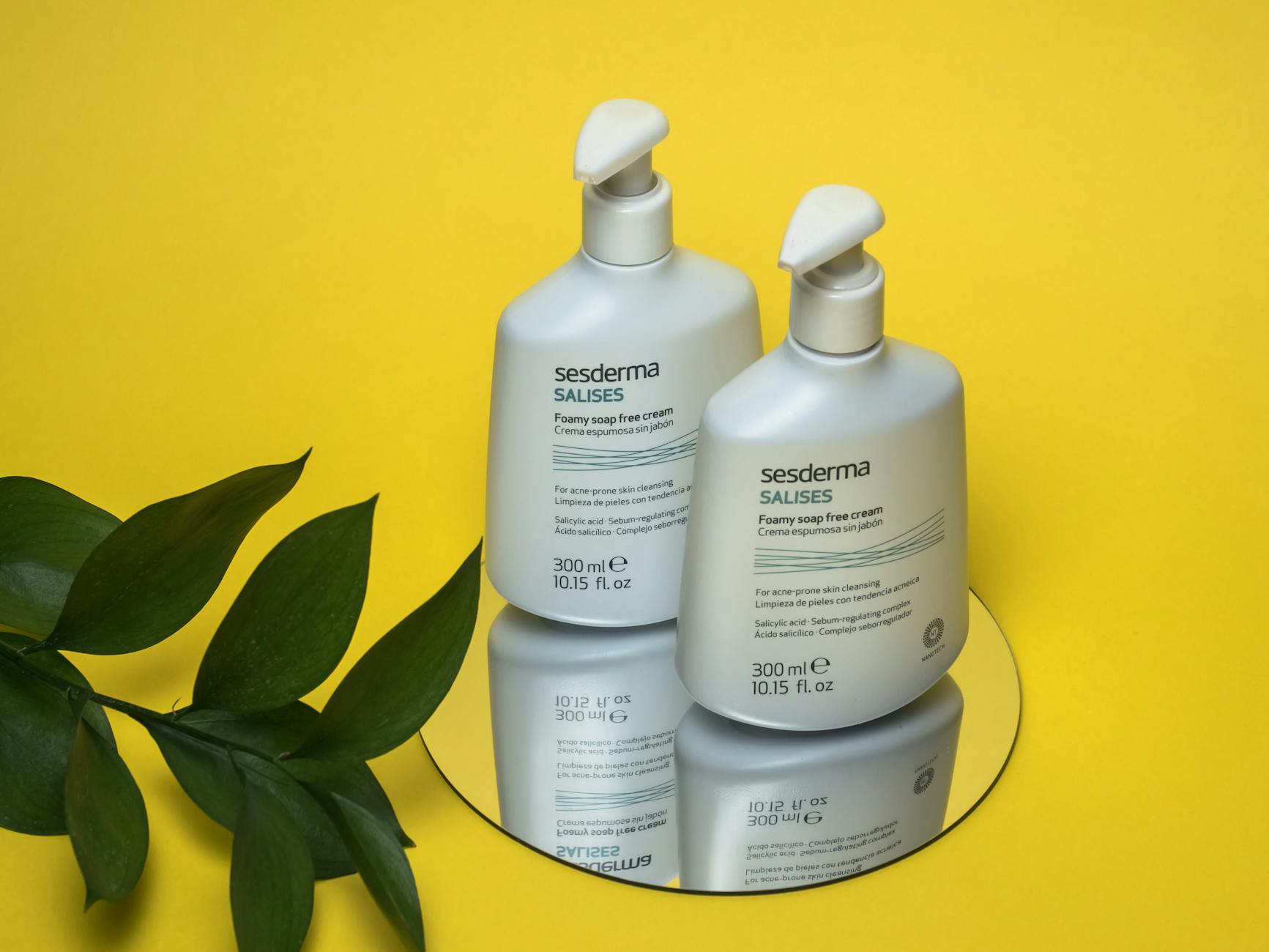Why Australia Is Leading the Way in Reef-Safe Sunscreen Practices

Australia's Reef-Safe Sunscreen Policies
Ensuring the health of our marine ecosystems is crucial, and Australia's initiatives for reef-safe sunscreen are paving the way for environmental protection. In places like the Great Barrier Reef Marine Park, policies are being implemented to promote the use of sunscreens that are both effective and safe for marine life. These changes are essential as conventional sunscreens often contain chemicals detrimental to coral reefs, like oxybenzone and octinoxate.
Implementation Timeline
Transitioning towards environmentally-conscious sunscreen solutions involves a carefully structured timeline. Initially, local councils near hotspots such as the Great Barrier Reef have initiated awareness programs to highlight the positive impact of reef-safe products. Over the next few years, retailer collaborations will further boost the availability of these options, eventually leading to more stringent enforcement of bans on harmful sunscreens.
Key Regulatory Measures
Regulatory measures focus on restricting the sale and use of sunscreens with chemicals known to damage coral reefs. The policies encourage innovations in formulation, advocating for safer ingredients like non-nano zinc oxide. Authorities ensure these measures align with educational outreach to inform tourists and locals alike about choosing responsible skincare products, including kids sunscreen, which offers protection without compromising marine safety.
Stakeholder Involvement
This transition calls for the collaboration of various stakeholders, including environmental groups, local businesses, and researchers like those based at the Flecker Botanic Gardens. The collective aim is to cultivate an informed public, driven by awareness of how small changes in product choices can lead to substantial benefits for both Australia's unique ecosystems and future generations.
The Science Behind Reef-Safe Sunscreen
Understanding the science behind reef-safe sunscreen is essential for those passionate about marine conservation. Traditional sunscreens often contain chemicals such as oxybenzone and octinoxate, which can be highly detrimental to coral reefs. These substances contribute to coral bleaching by affecting the coral's DNA and hindering its ability to reproduce. Instead of these harmful chemicals, we should be looking towards alternatives that offer protection without compromising the health of marine ecosystems.
Zinc oxide-based formulations, like zinc sunscreen, are an effective non-toxic alternative. They create a physical barrier on the skin, reflecting harmful UV rays without causing harm to marine life. Zinc oxide is mineral-based and doesn’t dissolve in water, making it a preferred choice among conservationists. When you're diving into the azure waters of the Great Barrier Reef Marine Park, knowing that you're using an environmentally safe product can make a big difference.
Scientific research continues to validate the importance of choosing the right sunscreen. Studies conducted around popular marine sites emphasise the accumulation of chemicals in water and their adverse effects. Supporting such research helps in advocating for broader adoption of reef-safe alternatives. Adopting practical conservation tips, like selecting appropriate sun protection, can ensure that both our skin and our reefs are shielded, allowing future generations to enjoy the beauty and biodiversity of places like the Great Barrier Reef Marine Park.
Educating the Public
Awareness Campaigns
Raising awareness about the importance of using reef safe sunscreen is crucial for conserving our invaluable marine life, such as the vibrant ecosystems at the Great Barrier Reef Marine Park. By understanding the detrimental effects certain chemicals in traditional sunscreens have on coral reefs, we can initiate a community effort to protect these delicate habitats. It's not just about switching products; it's about fostering a culture that respects the environment.
To effectively engage with environmentally-conscious locals and tourists, awareness campaigns should be integrated into everyday experiences. Consider interactive exhibits at local landmarks like the Flecker Botanic Gardens, where visitors can learn about sustainable living and the benefits of reef-safe products.
Moreover, community workshops can serve as platforms for practical conservation tips, inviting participation and dialogue. These workshops should include hands-on sessions where participants can make informed decisions about the products they use. This collective learning fosters a sense of responsibility toward marine preservation.
Social Media Strategies
Social media is a powerful tool for spreading information quickly and engaging a wide audience. By creating visually appealing and informative content about the positive effects of using reef-safe sunscreen, we can reach consumers who may not be aware of the environmental impact of their choices. Influencers and advocates can share their stories and tips, making the message relevant and personal.
Partnerships with Educational Institutions
Collaborating with educational institutions can amplify the reach of these campaigns. Schools and universities can integrate conversations about marine conservation and eco-friendly practices into their curricula. Special events or seminars at places like Tjapukai Aboriginal Cultural Park could bridge traditional knowledge with modern environmental science, enriching the educational experience for students and the public alike.
Environmental and Economic Impact
Protecting Marine Biodiversity
As someone passionate about preserving our vibrant marine ecosystems, I can't stress enough the importance of choosing reef-safe products like baby sunscreen. Regular sunscreens can contain harmful chemicals that wreak havoc on coral reefs, but opting for eco-friendly alternatives significantly mitigates this damage. By thoughtfully selecting products, we help safeguard marine biodiversity, ensuring these vibrant underwater worlds continue to mesmerise divers and scientists alike.
Supporting Local Economies
In Cairns, where the local economy thrives thanks to tourists eager to explore wonders like the Great Barrier Reef Marine Park, every action counts. By advocating and contributing to the use of reef-safe products, not only do we protect marine life, but we also support the thousands who depend on the reef for their livelihood. Eco-friendly products attract environmentally conscious travellers, keeping our dive operators and tour guides busy as they educate visitors on the importance of sustainability.
Long-term Conservation Benefits
Aligning with eco-friendly habits today secures a healthier future for marine environments, benefiting both nature and economics over the long term. Eco-conscious practices extend beyond immediate profits; they foster robust ecosystems that nurture tourism, fisheries, and cultural heritage. By choosing wisely, we contribute to enduring conservation, ensuring the ocean remains a safe, biodiverse haven for future generations to explore and enjoy.
Overcoming Common Challenges
When we dive into the waters of the Great Barrier Reef Marine Park, it’s crucial to consider the pressing challenges that come with transitioning to reef safe sunscreen. One of the biggest hurdles is the prevalence of misleading product labels. Many sunscreens claim to be reef-safe but contain harmful ingredients. To tackle this, one should always scrutinise the ingredient list, avoiding oxybenzone and octinoxate, which are notorious for damaging coral reefs. Instead, seek out zinc oxide or titanium dioxide-based sunscreens in non-nano form, as they are safer for marine life.
Addressing Policy Resistance
Resistance to policy change is another challenge, often arising from both industry players and consumers. It’s essential to engage in constructive dialogue with stakeholders, emphasising the long-term benefits of reef protection for both environmental sustainability and tourism. Workshops at the Tjapukai Aboriginal Cultural Park or community sessions at Flecker Botanic Gardens can serve as platforms for sharing personal stories and real-world examples of the policy's benefits.
Balancing Efficacy and Environmental Safety
Finding reef-safe sunscreens that offer effective protection without compromising safety is a concern for many. Practical conservation tips can help empower individuals in choosing products that protect both marine life and skin. Use products that have been independently tested and certified. Consider sunscreen application methods that minimise runoff—such as creams instead of sprays.
By making informed choices and supporting local initiatives, we can all contribute to preserving our invaluable marine ecosystems and ensure that the vibrant underwater life of the Great Barrier Reef remains captivating for generations to come.


